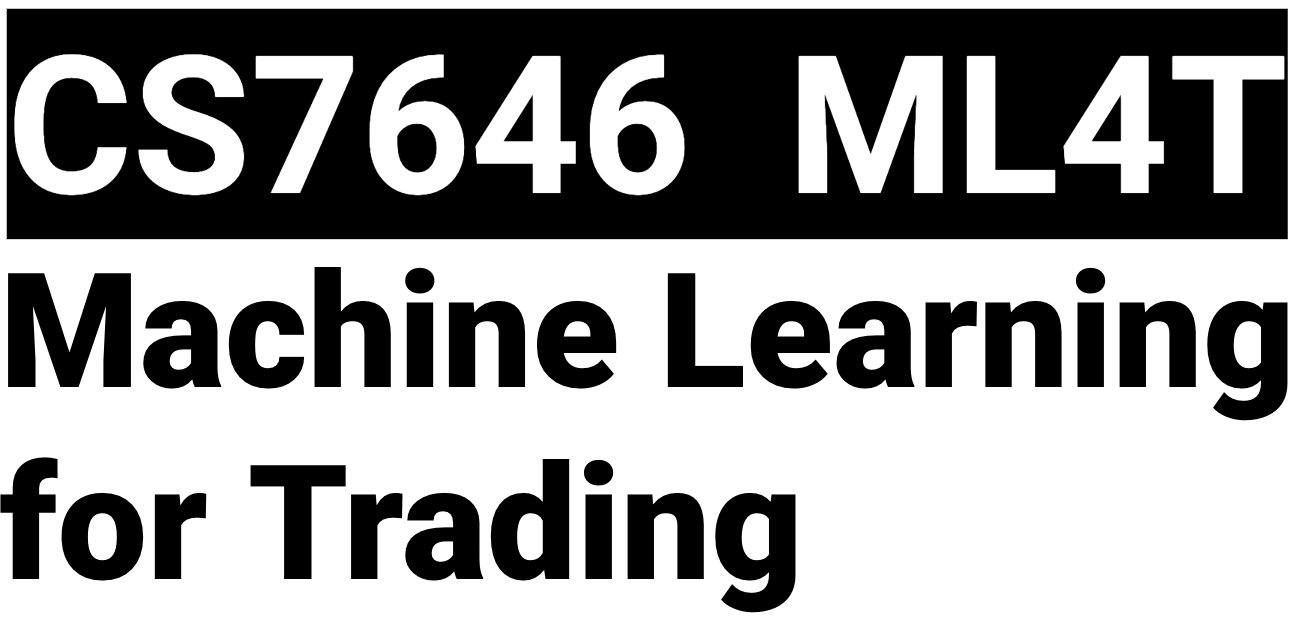Project 4: Defeat Learners
DTLearner.py
- class
DTLearner.DTLearner(leaf_size=1, verbose=False) -
This is a decision tree learner object that is implemented incorrectly. You should replace this DTLearner with
your own correct DTLearner from Project 3.- Parameters
-
- leaf_size (int) – The maximum number of samples to be aggregated at a leaf, defaults to 1.
- verbose (bool) – If “verbose” is True, your code can print out information for debugging.
If verbose = False your code should not generate ANY output. When we test your code, verbose will be False.
add_evidence(data_x, data_y)-
Add training data to learner
- Parameters
-
- data_x (numpy.ndarray) – A set of feature values used to train the learner
- data_y (numpy.ndarray) – The value we are attempting to predict given the X data
-
- Returns
-
The GT username of the student
- Return type
-
str
query(points)-
Estimate a set of test points given the model we built.
- Parameters
-
points (numpy.ndarray) – A numpy array with each row corresponding to a specific query.
- Returns
-
The predicted result of the input data according to the trained model
- Return type
-
numpy.ndarray
gen_data.py
-
- Returns
-
The GT username of the student
- Return type
-
str
best_4_dt(seed=1489683273)- Returns data that performs significantly better with DTLearner than LinRegLearner.
The data set should include from 2 to 10 columns in X, and one column in Y.
The data should contain from 10 (minimum) to 1000 (maximum) rows.
- Parameters
-
seed (int) – The random seed for your data generation.
- Returns
-
Returns data that performs significantly better with DTLearner than LinRegLearner.
- Return type
-
numpy.ndarray
best_4_lin_reg(seed=1489683273)-
Returns data that performs significantly better with LinRegLearner than DTLearner.
The data set should include from 2 to 10 columns in X, and one column in Y.
The data should contain from 10 (minimum) to 1000 (maximum) rows.- Parameters
-
seed (int) – The random seed for your data generation.
- Returns
-
Returns data that performs significantly better with LinRegLearner than DTLearner.
- Return type
-
numpy.ndarray
LinRegLearner.py
- class
LinRegLearner.LinRegLearner(verbose=False) -
This is a Linear Regression Learner. It is implemented correctly.
- Parameters
- verbose (bool) – If “verbose” is True, your code can print out information for debugging.
If verbose = False your code should not generate ANY output. When we test your code, verbose will be False.
add_evidence(data_x, data_y)-
Add training data to learner
- Parameters
-
- data_x (numpy.ndarray) – A set of feature values used to train the learner
- data_y (numpy.ndarray) – The value we are attempting to predict given the X data
-
- Returns
-
The GT username of the student
- Return type
-
str
query(points)-
Estimate a set of test points given the model we built.
- Parameters
-
points (numpy.ndarray) – A numpy array with each row corresponding to a specific query.
- Returns
-
The predicted result of the input data according to the trained model
- Return type
-
numpy.ndarray
testbest4.py
compare_os_rmse(learner1, learner2, x, y)-
Compares the out-of-sample root mean squared error of your LinRegLearner and DTLearner.
- Parameters
-
- learner1 (class:’LinRegLearner.LinRegLearner’) – An instance of LinRegLearner
- learner2 (class:’DTLearner.DTLearner’) – An instance of DTLearner
- x (numpy.ndarray) – X data generated from either gen_data.best_4_dt or gen_data.best_4_lin_reg
- y (numpy.ndarray) – Y data generated from either gen_data.best_4_dt or gen_data.best_4_lin_reg
- Returns
-
The root mean squared error of each learner
- Return type
-
tuple
test_code()-
Performs a test of your code and prints the results
